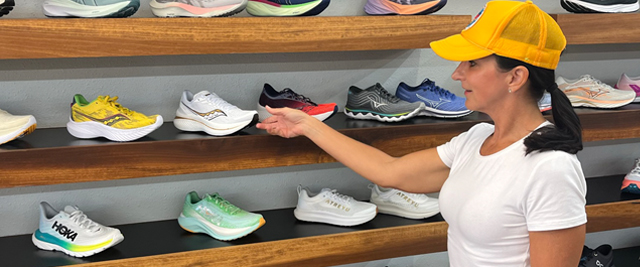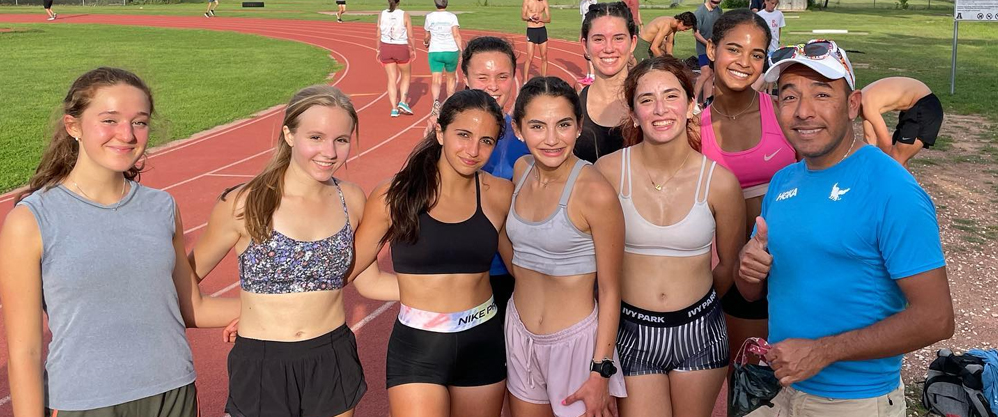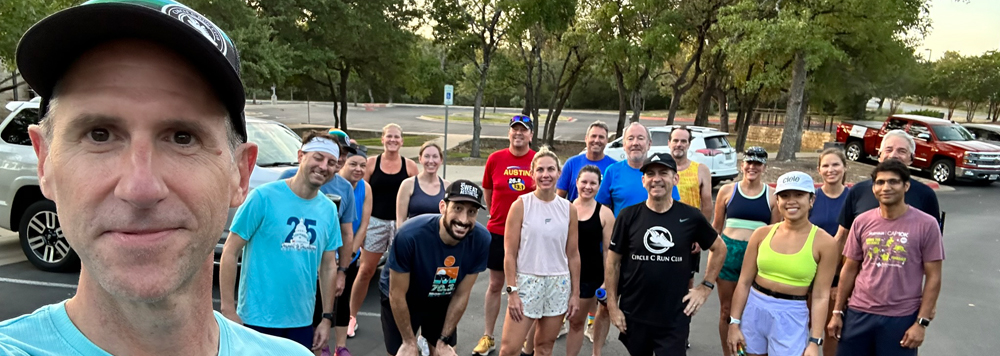No question, your running shoes are the single most important piece of gear you’ll need to run well and avoid injury. But how to pick the right pair? Today’s market offers a huge variety of choices from mega-soled models to barely-there racers. There are several important considerations to start with that will lead you down the right path. Things you need to consider when buying a pair include a) what kind of running do you do? b) How much running? c) What kind of terrain? And d) What are your goals?
And here’s something else that may seem obvious. Does the shoe fit well? Simple as this is, it’s of great importance. Besides overall comfort, the right fit will lead to optimal performance and reduce injury risk. One way to know if the fit is right is that you shouldn’t be thinking about your shoes at all when you run.
Lots of questions. But the Ready to Run experts will help guide you through the maze of choices so that you get the best shoe for your needs.
Generally speaking, running shoes fall into two categories: neutral or stability. The majority of running shoes are neutral and usually offer grater cushioning. Stability running shoes are designed to help counter pronation—when your ankle/foot rolls inward during the landing phase. “Heel-toe drop” is not as important but nonetheless a valid consideration. Almost all running shoes have more sole thickness under the heel to absorb impact. However you’ll also see shoes with a sole that has more uniform thickness from heel to toe. If you’re a heel-first landing runner, you’ll want a higher heel-toe drop. For runners who tend to land mid-foot, a lower heel-drop is preferred.
Confused? Don’t worry. The fit specialists at Ready to Run will help sort things out and guide you to the best pair of shoes for your needs. They’ll start by asking the important questions, like what kind of running do you do and on what surfaces? From there, they’ll watch you run to analyze your gait. Their one-on-one customer service and in-depth knowledge of footwear is a key factor in getting you the right shoes.
“When a customer comes in the first thing we ask is, ’Tell me about your running,’” said Ready to Run fit specialist Kim Eldridge. “Do you need a trail shoe?” (Probably not if it’s just for running on Lady Bird Lake).
“We’ll ask questions like ‘What are you going to use the shoes for? What’s your mileage?’ Most shoes are going to last around 500 miles. Running shoe companies have been stacking shoes more. That’s the overall height of the sole. A lower-cushioned shoe might last 300 miles. If a runner has a shoe and a model that is working for them, there is no need to change it.
“A lot of people come in who have bought shoes elsewhere that are too small,” added Eldridge. “They’re just buying their regular shoe size. So we’ll often fit runners with shoes that are a half or full size bigger than their regular shoes.
“Additionally, we will watch a customer walk, run, and perform a one-legged squat,” said Eldridge. “And we’ll look at their arches,” she said. “If they’re neutral, we’ll try a couple cushioned shoes from different brands. A stability shoe will have some kind of posting to control pronation. It’s a matter of what feels best. We’ll watch them run in different models to see what feels the most natural. You want the shoes to feel like part of your body.”
Upcoming Races: Saturday August 12 at 7:30 a.m., Michelle’s Hot Peeps Beat CC 5K at Murphy Park in Taylor. Saturday August 12 at 8:00 a.m., the Purple Reign Rattler Run 5K at San Marcos High School. Sunday, August 13 at 7:00 a.m., the Summer Sizzler 1 Mile, 5K, 10K and 15K. by the Kohls in Sunset Valley.





